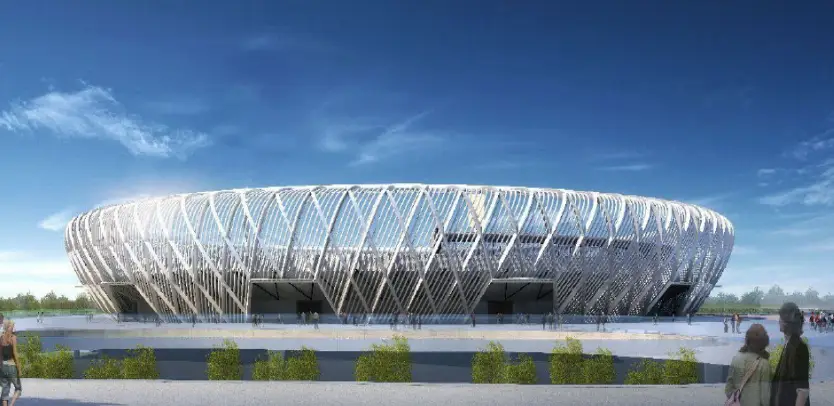lighting
-

Optimizing Poultry Lighting for Enhanced Egg Production
Photoperiod Management Artificial lighting programs significantly influence egg production by regulating reproductive hormones. Layers require a minimum of 12–14 hours of daily light to stimulate egg-laying, with longer photoperiods (e.g., 16–18 hours) improving production rates in both chickens and turkeys. For example, extending daylight to 18 hours in turkeys reduced photorefractoriness and increased egg production…
-

Red Light for Chicken Coop
The use of red light in chicken coops has been studied for its potential effects on growth, behavior, and welfare in broiler chickens. Key findings from relevant research include: Improved Growth Performance: Exposure to monochromatic red light (632 nm) during incubation was associated with higher body weight in broiler chickens during the rapid growth phase…
-

basketball court lighting requirements
The lighting requirements for basketball courts are critical for ensuring optimal visibility, player performance, and energy efficiency. Based on the provided literature, the following key aspects should be considered: 1. Illuminance and Uniformity Adequate illuminance (measured in lux) and uniformity are essential for player safety and accurate visual perception. Simulations comparing metal-halide lamps, white LEDs,…
-

indoor basketball court lighting
Indoor basketball court lighting requires a comprehensive approach that balances energy efficiency, visual comfort, and athletic performance. Below are key considerations and advancements based on recent research: Light Source Selection and Energy Efficiency Hybrid lighting systems combining sunlight and white LEDs demonstrate superior performance in terms of illuminance, uniformity, and energy efficiency compared to traditional…
-

Football Field Lighting Design Guide
Football Field Lighting Design Guide Designing effective football field lighting requires a balance of technical precision, energy efficiency, and user-centric considerations. Below is a structured guide based on current research and best practices: 1. Uniform Illuminance and Aiming Angle Optimization Key Parameters: Achieve uniform illuminance by adjusting luminaire aiming angles in horizontal and vertical planes.…
-

Sports Lighting Fixtures
Sports lighting fixtures have undergone significant advancements, driven by technological innovation and evolving standards. Key aspects from the literature include: 1.Design Standards and Recommendations The Illuminating Engineering Society (IES) provides guidelines for sports lighting systems in RP-6-15, emphasizing visibility, glare control, and adaptability for various sports (e.g., tennis, basketball) and broadcasting needs. These standards prioritize…
-

Football Field Lighting: Optimized Layout & Design Principles
Football Field Lighting: Optimized Layout & Design Principles 1. Glare Control & LED Implementation 2. Zone-Specific Layout Standards Field Area Illuminance (lux) Uniformity (Emin/Eavg) Mounting Height Playing Surface 500-2000* ≥0.7 15-50m Spectator Zones 100-300 ≥0.6 8-12m Walkways/Perimeters 50-75 ≥0.4 4-6m *Competition level-dependent: 500 lux (amateur) → 2000 lux (FIFA World Cup) 3. Structural Configuration 4.…
-

Baseball Field Lighting Design
Baseball field lighting design requires careful consideration of visibility, energy efficiency, and compliance with sports-specific standards. Below are key principles and innovations based on the provided literature: 1. Illumination Uniformity and Glare Control Achieving uniform illuminance across the entire field is a primary challenge. Rough set theory has been applied to optimize aiming angles of…
-

Optimizing Lighting Strategies in Broiler Chicken Production: Implications for Welfare, Performance, and Sustainability
1. Introduction Lighting management is a critical yet often underestimated factor in modern poultry production. As global demand for poultry meat continues to rise, optimizing lighting conditions has emerged as a cost-effective tool to enhance broiler welfare, mitigate environmental stressors, and improve productivity. This article synthesizes recent research on lighting programmes, intensity preferences, and circadian…
-

The Evolution and Impact of Livestock Lighting: Synergizing Welfare, Productivity, and Sustainability
The Evolution and Impact of Livestock Lighting: Synergizing Welfare, Productivity, and Sustainability Livestock lighting has evolved from basic illumination to a science-driven tool that harmonizes animal welfare, operational efficiency, and environmental sustainability. By integrating spectral innovation, circadian biology, and precision agriculture, modern systems are redefining livestock management. 1. Circadian Health & Physiological Optimization Light orchestrates…
Got any book recommendations?